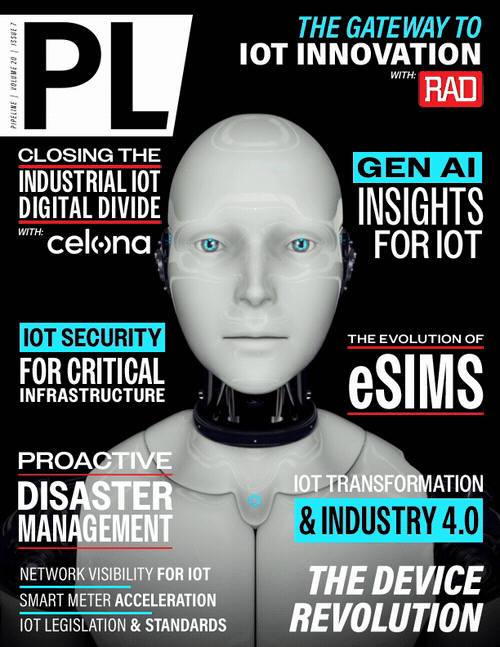Gateway to IoT Innovation:
The $10 Trillion IoT Opportunity
The value of IoT resides in its ability to link the physical and digital worlds. Tens of millions of connected devices and sensors are collecting data across a multitude of different industries. Whether it’s a factory, farm, a store, or retail establishment ― IoT represents real things that collect important, even critical, business information. These data can have a significant impact to operations, costs, and even regulatory or legal implications. But to date, it has largely been up to the end user to figure out how to collect, analyze, and make use of this business-critical information.
Pipeline had the opportunity to explore this topic with the Chief Technology Officer of RAD, Sharon Rozov, who has been tracking this trend for the last decade. RAD offers carrier-grade IoT solutions and has been helping its customers transform to better serve their enterprise customers for over 40 years.
“Take a small grocery store for example,” Rozov told Pipeline. “Today’s IoT solutions offer actuators with sensors that can monitor changes in temperature, humidity, and even refrigerator door sensors to track state an abnormal movement. CSPs are looking to harness the devices, data, and sensors to create tailored IoT solutions to help these SMBs. Grocery store owners don’t want and can’t handle the complexity of designing and deploying the underlying network and compute solution, and this is a real opportunity for service providers to provide more value to their SMB customers.” Rozov went on to add RAD is working with service providers to build tailored industry IoT solutions that help eliminate technical complexity and provide store owners with access to their device data anytime and anywhere. But that’s really just the beginning.
The larger opportunity lies in the ability to replicate success across industry verticals. By leveraging their customer relationships, they can create tailored IoT industry-specific use cases that would apply to large swaths of customer segments. They can then leverage their other customer relationships in the same industry to duplicate the success with minimal effort.
“Service providers have long-standing relationships with their customers and are very good at replicating success,” Rozov noted. “With each implementation the solution gets better, incorporates collective customer value, and becomes easier to implement.”
The connectivity layer represents the smallest and most competitive piece of the IoT pie, where cost and customer experience are the primary differentiators. Providing the connectivity may be the opportunity today, but to capitalize on IoT growth and innovation service providers will need to become a trusted technology partner and provide more strategic value to their customers to help them succeed. Technology providers like RAD are helping service providers understand their customers’ unique needs to build industry-specific services that can help them go well beyond just providing them with the SIM, data plan, and connectivity service.
“Small and medium businesses typically don’t have the wealth of resources or IT expertise that larger enterprises have to be able to transform,” Rozov stated. “Service providers can strengthen their existing customer relationships and provide more value by better understanding their customers, building innovative industry platforms that help simplify and streamline IoT transformation.” The only question is, how?Key Components of Intelligent IoT
At the heart of the opportunity for network service providers lies the fact that IoT is making the shift to intelligent IoT, with IoT gateways playing an integral role. IoT gateways provide the mechanism to collect, analyze, and present IoT data — at the edge, in the cloud, or both, depending on the use case. Similar to the smartphone opportunity above, the IoT gateway opens the door to Intelligent IoT by enabling applications that can extend service providers’ value proposition.
At the IoT far edge, gateways can host a range of applications and perform edge-compute functions that provide SMBs and enterprises with keen business insights, analytics, and automation. These applications can optimize networks, improve resiliency and performance, and improve cybersecurity.
“Going back to the grocery store example, if a store owner is collecting video footage and doesn’t want to send large amounts of video data in real time over the network, they could use motion detection and edge computing capabilities at the IoT edge to analyze the footage and only send the video to the cloud when motion was detected, saving cost and improving bandwidth usage,” Rozov added.

















